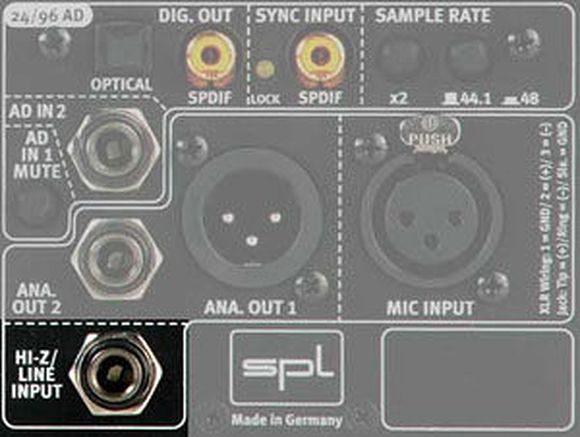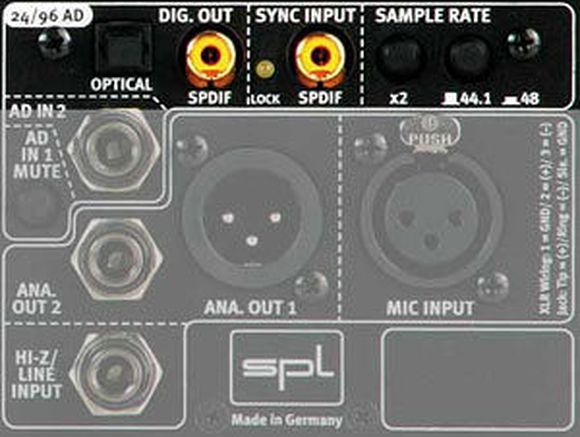5. Advanced Features
Instrument Input

An Instrument Input (Hi-Z) is primarily used for connecting guitars and basses with passive pickups. Instrument inputs differ from line inputs due to their particularly high input impedance (500 kΩ to 1MΩ) and higher input sensitivity. This is because the high-impedance pickups of guitars and basses require an even higher impedance input to fully unleash their sound character and avoid level losses. Guitars and basses sound weak and dull when plugged into a simple line input. Manufacturers often refer to the instrument input as Hi-Z Input ("Z" is the symbol for impedance). In rare cases, such an input can be switched between Line Input and Hi-Z.
Microphone Input with Variable Input Impedance

Some newer preamps feature microphone inputs with adjustable or switchable input impedance. The background is as follows: By changing the input impedance of the preamp, the interaction between the microphone and the preamp changes. Technically, a high input impedance is desirable; it puts the least load on the microphone output. However, in practice, sometimes a microphone sounds subjectively more pleasant when it has to fight against a low input impedance. Variable input impedance usually reveals only subtle differences in sound. Whether you want to rely on a somewhat unpredictable effect for sound design or prefer to intervene in the sound process in a controlled and reproducible manner with an equalizer is a decision everyone has to make for themselves.
Digital Inputs

Some models already feature high-quality analog/digital converters for lossless signal transmission to the DAW, or they can be retrofitted with corresponding option cards. In the case of two-channel models, a digital interface such as S/PDIF or AES-3 is usually used. For eight-channel preamps, connection via the optical ADAT interface is common.
You can use such preamps wonderfully to increase the number of microphone inputs on the audio interface. But be careful: ideally, the digital interfaces should match the existing inputs on the audio interface. The optical Toslink interface can transmit both S/PDIF and ADAT signals. Often, it can also be switched between ADAT and S/PDIF.
Your Contacts
Product Highlights
Offers
-
Electric Guitar Preamps
-
Preamps
Recommended categories
Do you like what you're seeing?






